|
|

 Stalin's deal with Hitler (August
1939) Stalin's deal with Hitler (August
1939)
 Germany invades Poland ... and Russia soon does the same (September) Germany invades Poland ... and Russia soon does the same (September) The "Sitzkrieg" (winter
of 1939 to the
early spring of 1940) The "Sitzkrieg" (winter
of 1939 to the
early spring of 1940)
 The Battle of the Atlantic (1939-1940) The Battle of the Atlantic (1939-1940)
 Russia invades the Baltic
States and Finland Russia invades the Baltic
States and Finland
 Hitler invades Western Europe (April-June
1940) Hitler invades Western Europe (April-June
1940) The "Battle of Britain" begins (summer of 1940) The "Battle of Britain" begins (summer of 1940)  American
neutrality American
neutrality
 Roosevelt is elected to his thrid term as U.S. President Roosevelt is elected to his thrid term as U.S. President  "Operation Barbarossa":
Hitler's
assault on Stalin's Russia (June
1941) "Operation Barbarossa":
Hitler's
assault on Stalin's Russia (June
1941)The textual material on this webpage is drawn directly from my work America – The Covenant Nation © 2021, Volume Two, pages 15-20. Also Note: a much more extensive coverage of this same section can be found on another page at this website: The On-Set of the War |

A Timeline of Major Events during this period

 |

|
|
The Molotov-Ribbentrop Pact
The weakness of the French and British response to Hitler's expansive moves made Stalin increasingly nervous. Soviet Foreign Minister Maxim Litvinov had been trying to reach out to these Western countries. But other than with the shunned Churchill, there was no real receptivity to the idea of an anti-Hitler alliance in either Paris or London. Thus it was that in May of 1939 Stalin replaced Litvinov with Vyacheslav Molotov and soon Russia began a move to embrace Hitler. Then in late August (the 23rd) the world was surprised to hear that Hitler and Stalin had signed a non-aggression pact, known popularly as the Molotov-Ribbentrop Pact. It sounded like a wonderful idea: Hitler finally agreeing to peace in Eastern Europe. But what the world did not know, but was soon to find out, was that secretly this was simply a deal between the two dictators to divide up Eastern Europe into two distinct spheres of Russian and German control – with Poland split down the middle. The idea was that having settled this matter (for the time being), Hitler could then turn his aggressions westward towards France, the Netherlands, Belgium, Scandinavia and ultimately to Britain – taking the pressure off of Stalin in the East.
|
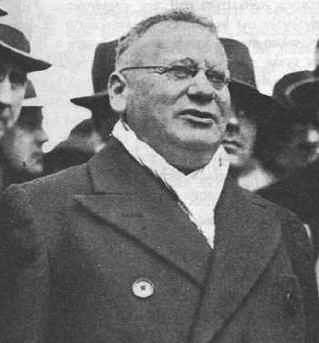
Maxim Litvinov – Soviet Foreign
Minister – 1930-1939
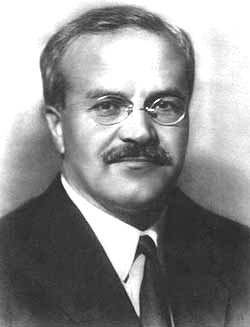
Vyacheslav Molotov – Soviet
Foreign Minister who replaced Litvinov – May 1939
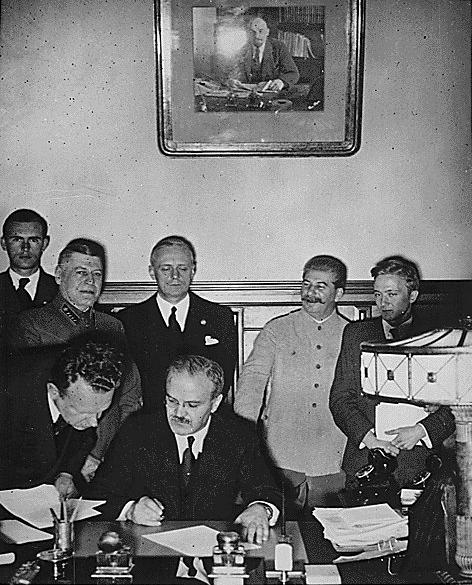
Soviet Foreign Minister Molotov
signs the German-Soviet non-aggression pact;
Joachim von Ribbentrop and
Josef Stalin stand behind him, Moscow, August 23, 1939

|
|
Without any formal warning, on September 1st
Hitler unleashed Blitzkrieg on an unsuspecting Poland as thousands of
heavy tanks accompanied by a similar number of planes crushed an
unprepared Polish army – and people. An outraged Chamberlain
immediately declared war. But Britain was in no position to do anything
to help Poland. Within two weeks Hitler's troops had taken over their
portion of the Polish territorial division with Russia. And then at that point Russia invaded from the East, the Poles at first believing that their Slavic brothers were coming to their aid. They would soon discover to their horror that the Russians were no friendlier than their German enemies – actually far worse when the Russians secretly rounded up thousands of Polish officers and political officials and had them slaughtered and dumped in mass graves in the Katyn Forest. In the face of the Russian aggression Chamberlain did nothing – probably because at this point he realized he could do nothing. The situation had become immensely bigger than anything he had planned for. Thus the British made no move to expand the war they were now once again drawn into also to include Russia. Other than offer sanctuary in England to those of the Polish government and military able to make their escape from the German-Russian aggression, Chamberlain did nothing.
|
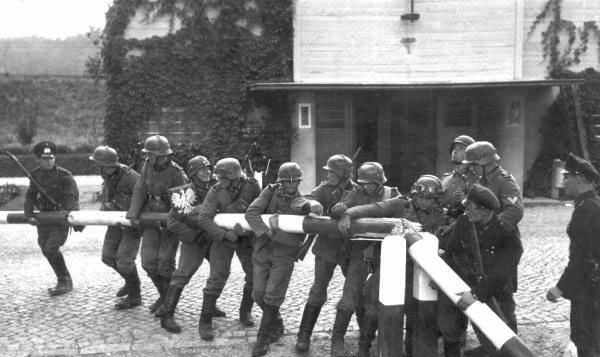
The German invasion of Poland

The German invasion of
Poland
German troops attacking
Poland
German troops parade through Warsaw,
Poland – PK Hugo J.ger, September 1939.
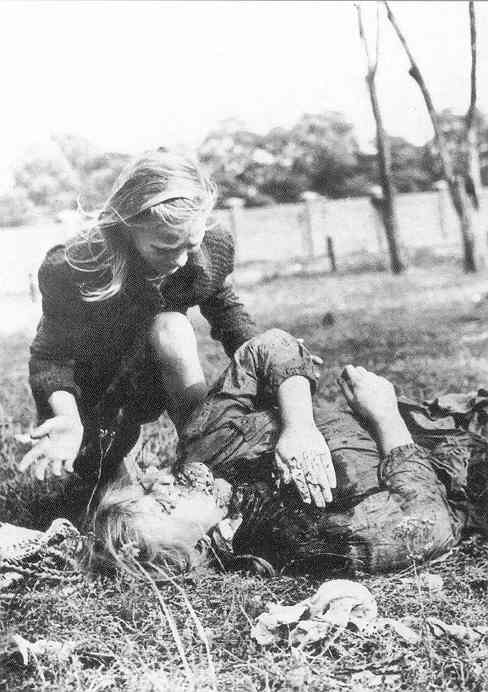
A Polish girl grieving over her sister killed by German arial strafing – 1939
Jewish men being cowed and
beaten by S.S.
for the shooting of a police officer in Olkusz, Poland
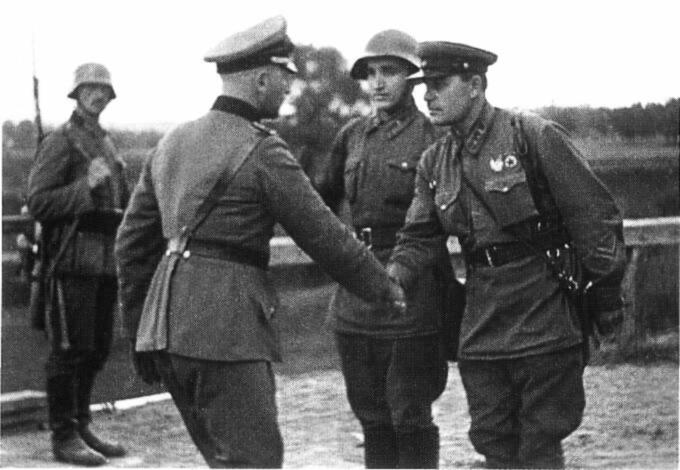
German
and Soviet
officers greet each other after having overrun Poland
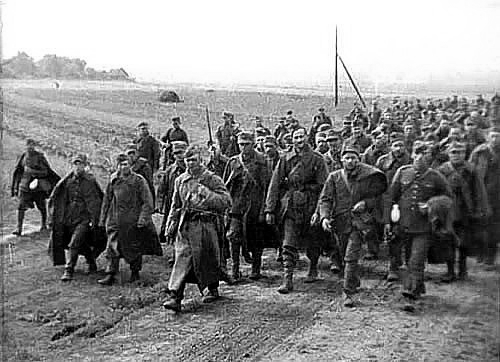
Polish troops taken captive
by the Russian Red Army
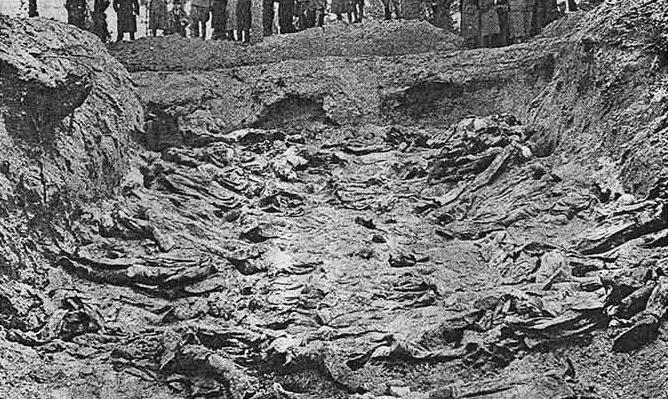
One of the mass graves of
Polish officers massacred at Katyn Forest (and elsewhere)

|
|
The Sitzkrieg or Phony War (September 1939-April 1940)
In fact the French also did nothing … when they had a grand opportunity to strike hard at Hitler's Germany from the West while he was absorbed in the task of overrunning Poland in the East. But the conquest of Poland had happened so quickly and the French armies were so unprepared for action that there probably was little they could have done anyway. By the time that both the British and French could get organized, the fighting was over in Poland … and Germany was then in a strong position to fend off any British or French attack. Thus the British and French both did nothing. As the Germans mockingly termed the matter, the French and British did not offer Blitzkrieg, they offered only Sitzkrieg (a Sitting War!) – or as it even came to be termed in Britain, a Phony War.
|

|
|
Actually there was action on other fronts at the time. In October Stalin sent Soviet troops into neighboring Finland when that country refused to give over to the Russians Finnish borderlands just to the north of the Soviet city of Leningrad (former Petrograd and prior to that St. Petersburg). The Finns fought back bravely and held off the Russians for a while. But ultimately it was a battle between a dwarf and a giant … and the giant won (February 1940). The League of Nations did what it could to bring justice to this aggression in denouncing Stalin's attack on Finland. But all that succeeded in doing was to bring Soviet Russia to join the ranks of the various powers who had simply resigned in disgust when the League tried to intervene in its power politics.
|
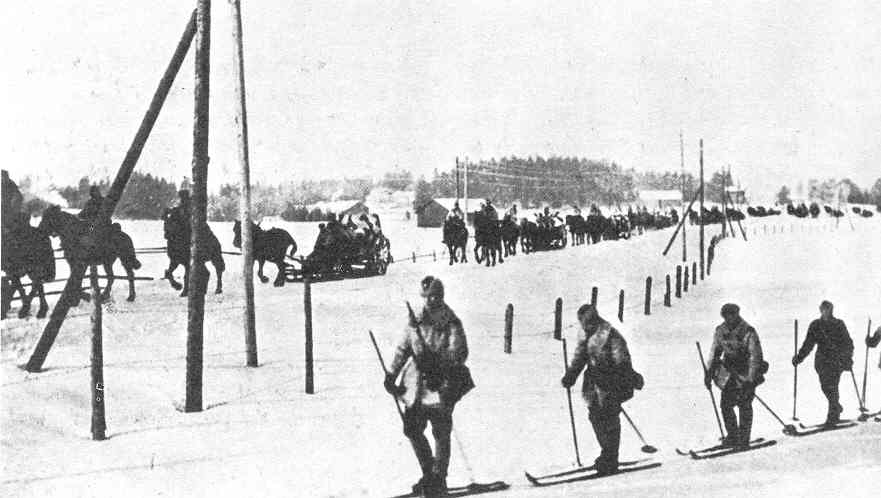
Finnish ski patrol on the move against Russian invaders – December 1939
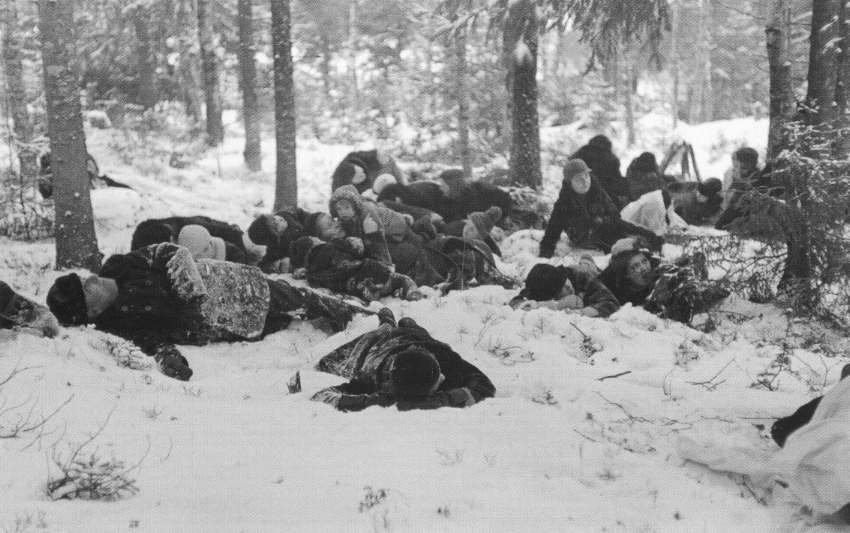
Finnish civilians in the
woods to escape another Soviet air raid – early 1940

|
|
On the high seas the Battle of the Atlantic actually got underway almost immediately. The Germans wasted no time in attacking the British with a submarine assault on the British naval harbor at Scapa Flow. And Churchill, now head of the British navy as its First Lord of the Admiralty, struck back in sending ships to attack the German battleship Graf Spee even in the neutral port of Montevideo, Uruguay.
|
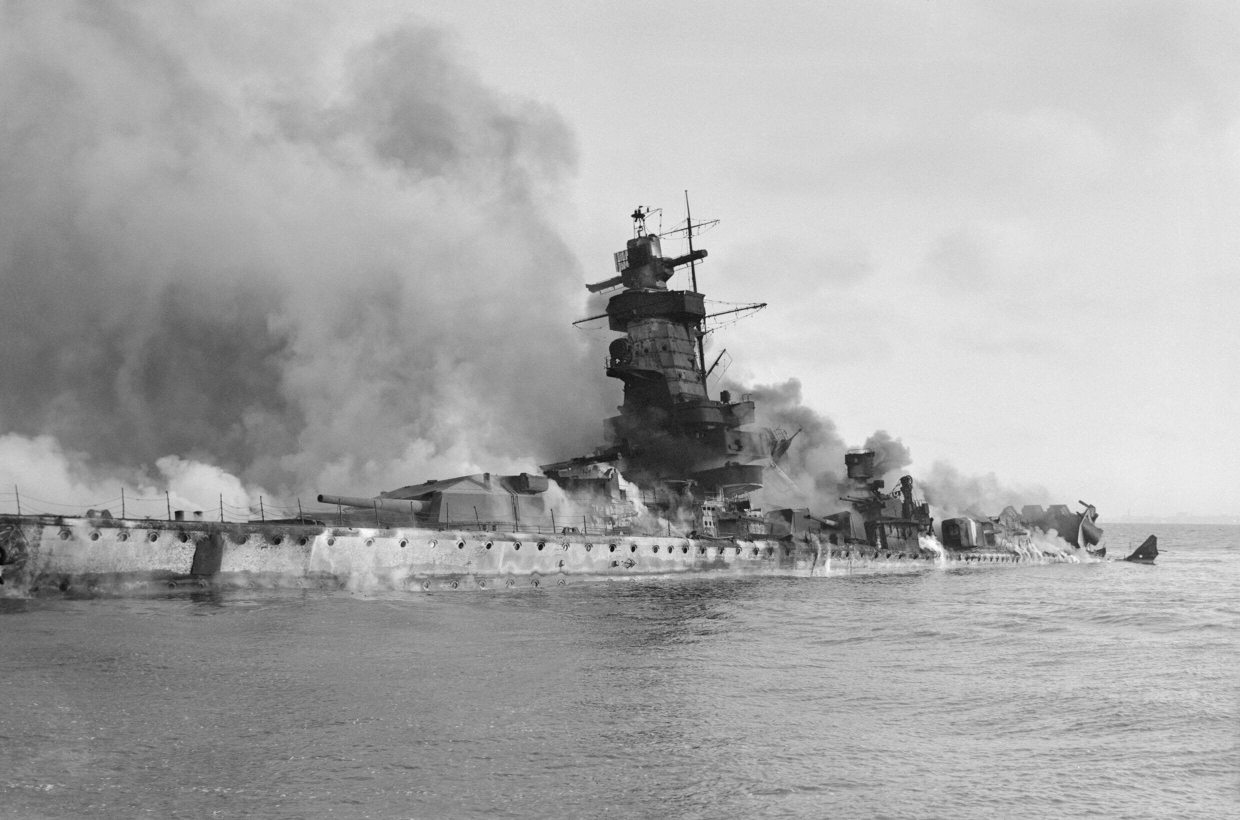
Scuttled German battleship
Admiral
Graf Spee
- December 13, 1939
|
America stays out of the action And despite Roosevelt's cautious efforts to get America to wake up to the dangers that events in Europe posed even to America on the opposite side of the Atlantic, Congress's response was to reconfirm its Neutrality Act, making it very clear to everyone at home and abroad that America had no intentions whatsoever of getting involved in another European feud. Any such American involvement was depicted as some kind of conspiracy of evil industrial capitalism once again seeking to gain huge financial profits in sending young American soldiers to die in Europe. That simply was not going to happen.
|

|
|
The war in the European West finally gets underway (April 1940)
Again without warning, in early April of the next
year, Hitler struck northward, completely overwhelming Denmark in a
single day's action and attacking coastal Norway at the same time.
There in Norway the action ground down as the Norwegians fought back
fiercely (Hitler would never gain complete mastery over Norway),
Hitler's objective being to gain control over Norwegian access to the
Swedish iron ore that was needed so badly by the German war machine.1 Then in May, Hitler struck west from Germany, attacking both Belgium and the Netherlands (the Netherlands had remained neutral in the First World War), giving the German war machine opportunity to swing around the well-defended French Maginot Line facing Germany along the Rhine River. The French were not prepared for Blitzkrieg, believing that they had time (as in the First World War) to assemble French forces (again, assisted by British forces sent to France) along a broad front running along France’s northern border. But Hitler’s mobile army quickly got itself through the dense Ardennes Forest in Belgium and smashed through the center of the French line, dividing it and trapping one half of the French army behind the Maginot line. By mid-May German forces were already at the Marne River (the point of furthest German advance in World War One) and Paris was in no position to defend itself. But then Hitler instead turned his troops west to chase down the other half of the French and British armies – who however were able in late May to make their escape to Britain by way of a massive evacuation at Dunkirk. In mid-June a new French government was formed under the leadership of World War One French hero, Marshall Philippe Pétain. But at this point it was clear that all was lost for the French. Sadly, Pétain found himself forced to sign a humiliating armistice. Under the terms of the armistice, Hitler did allow the French to continue to self-govern from the town of Vichy – but only the southern half of the country. The northern half (Paris, plus France’s industrial lands) would come under direct German rule. But at least the war was over – for the French anyway
1Much to the distress of the Norwegians, fellow Scandinavian Sweden itself remained "neutral" during the course of the war.
|
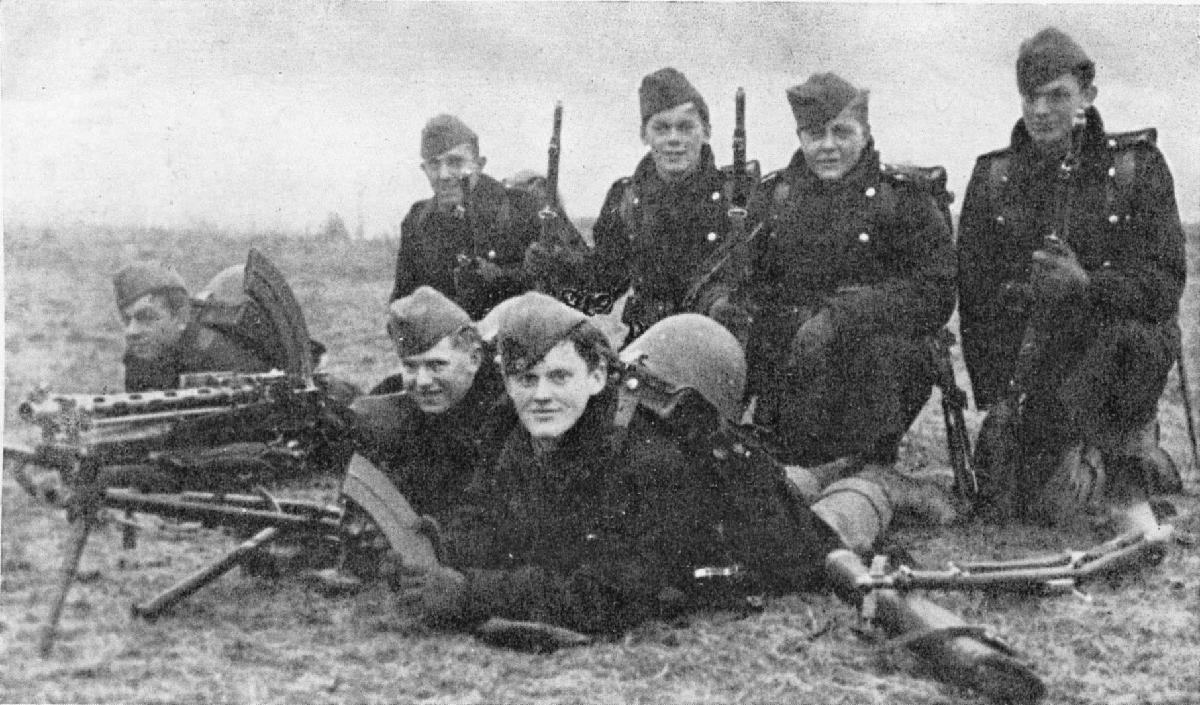
A squad of Danish troops
on the morning of the German invasion, 9 April 1940,
photographed near Brevedad
in Southern Jutland. Two of these men were killed later that day
Deutsches
Bundesarchiv
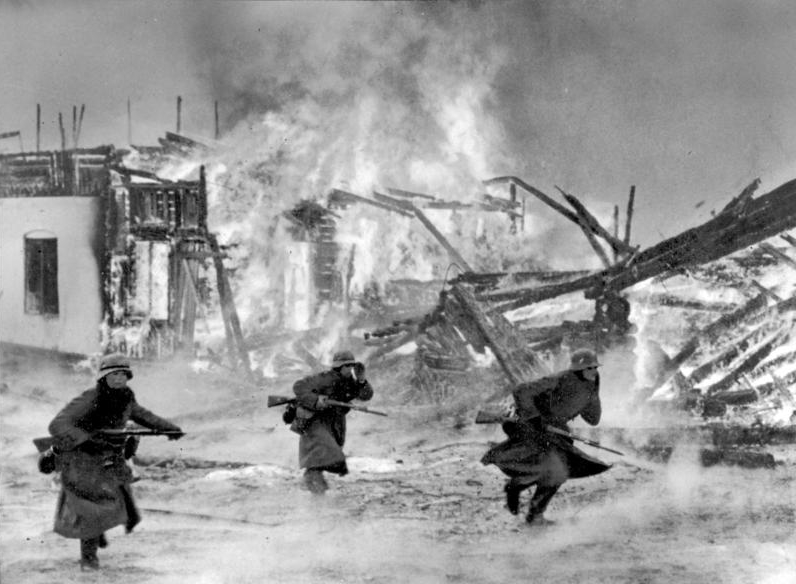
German infantry attacking through a burning Norwegian village.
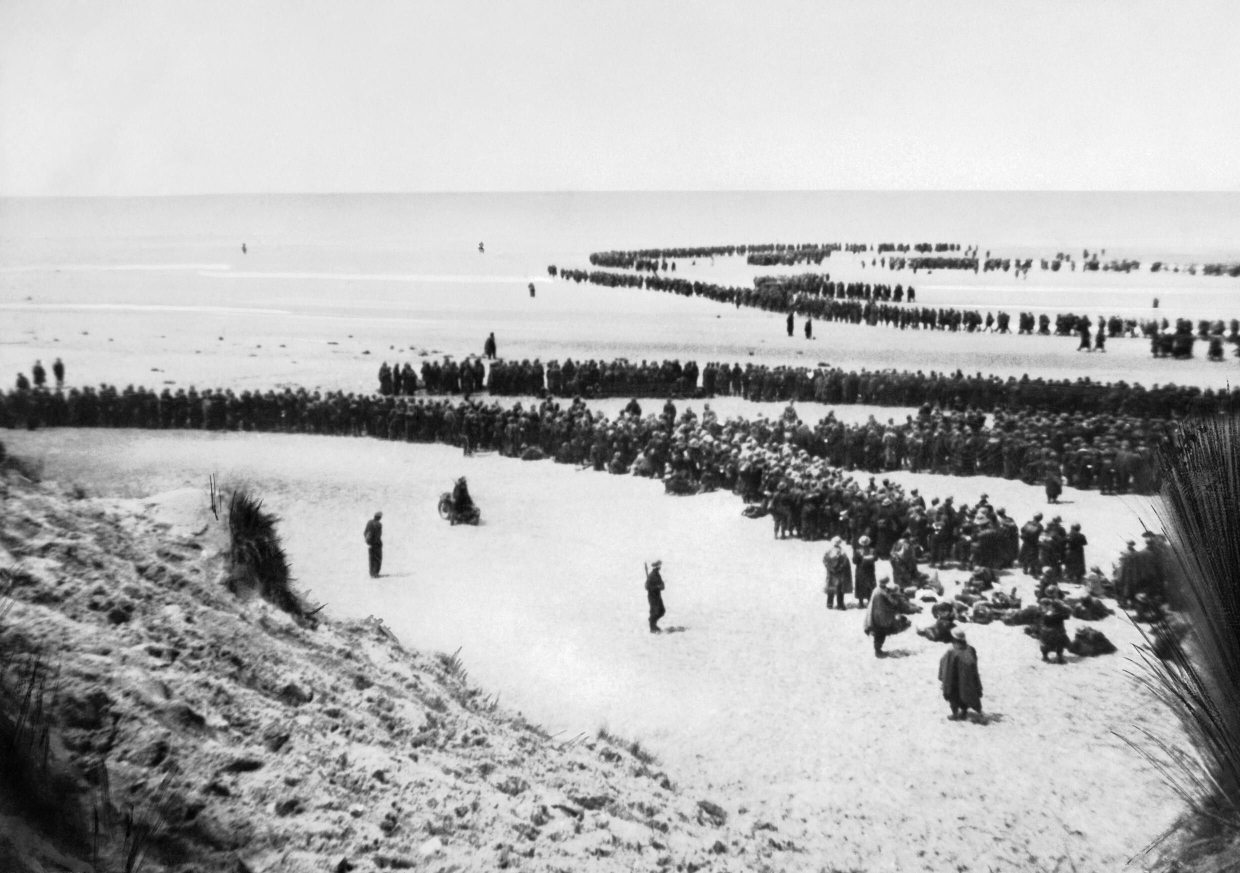
Thousands of British and French
troops
seeking to avoid total destruction by Hitler's army
awaiting evacuation from Dunkirk to
England
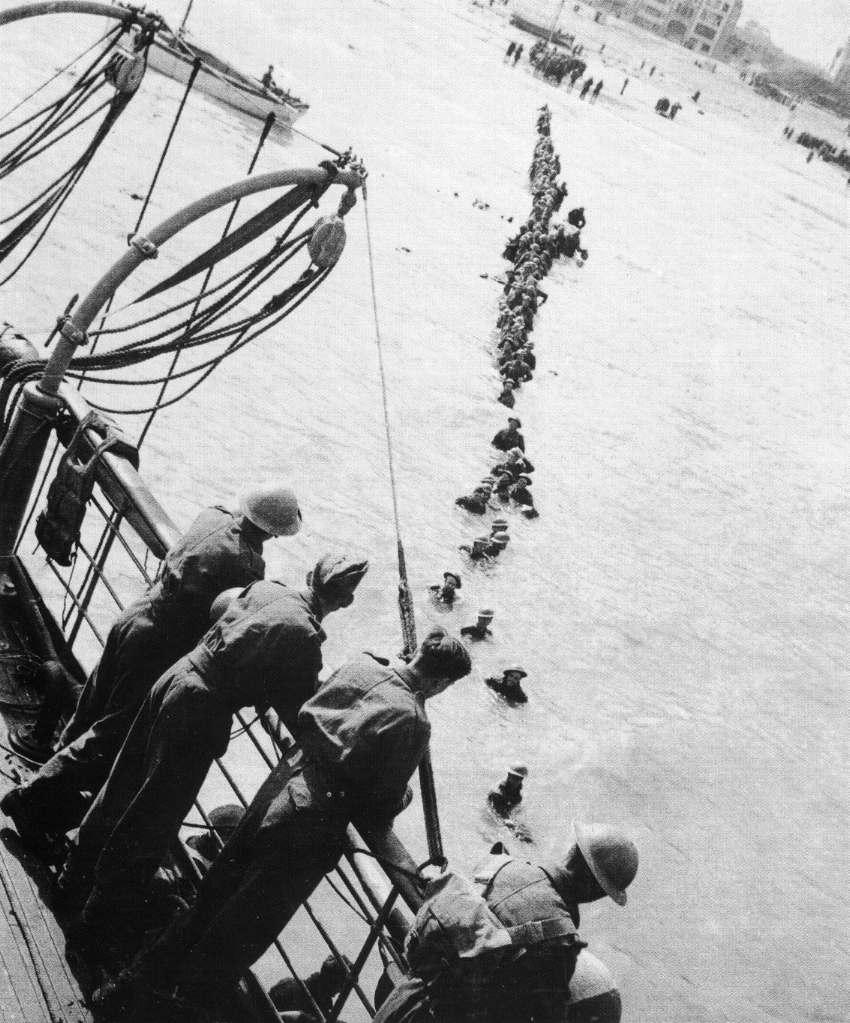
Some of the 200,000 British
and 140,000 French and Belgian soldiers
during a 10-day evacuation
from the beach at Dunkirk, Belgium – late May/early
June1940
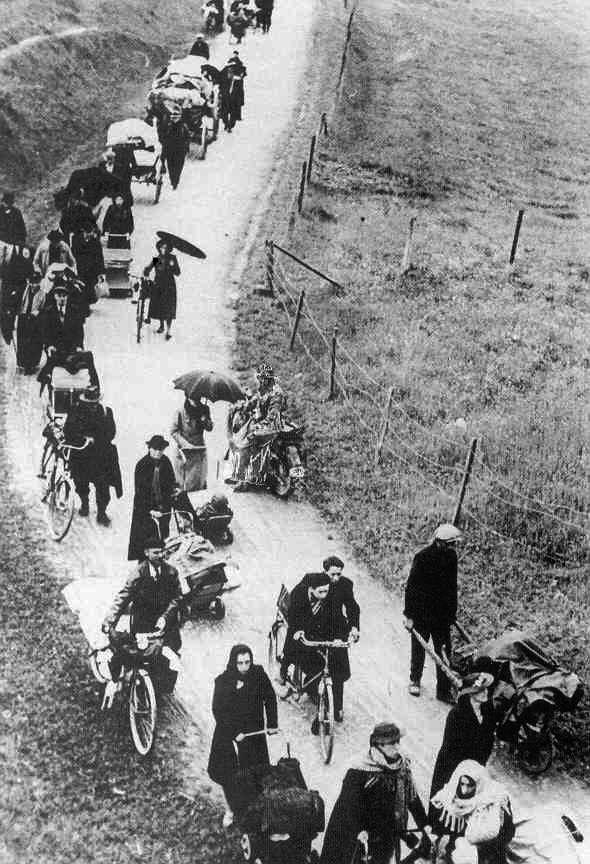
French fleeing south to escape
the German offensive – 1940
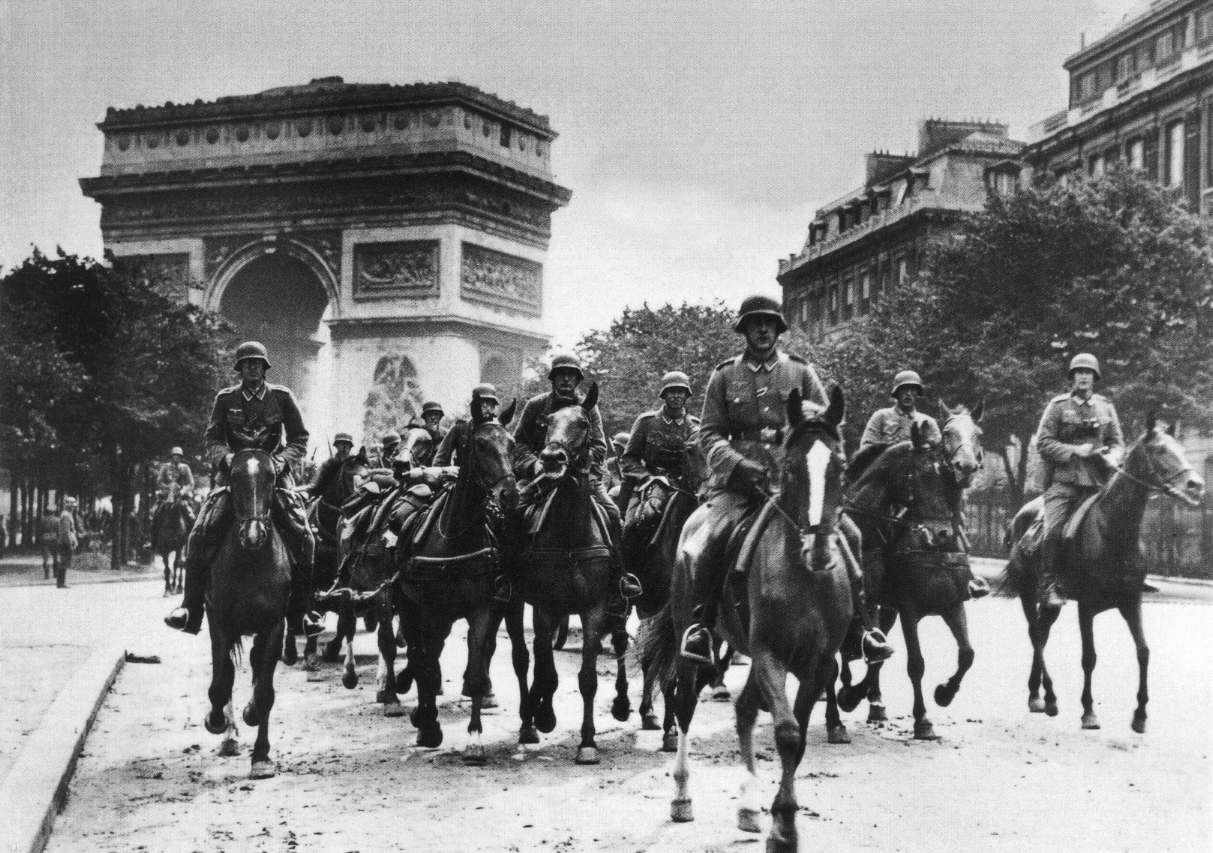
German horsemen parading
triumphantly past the Arc de Triomphe in Paris – June 1940
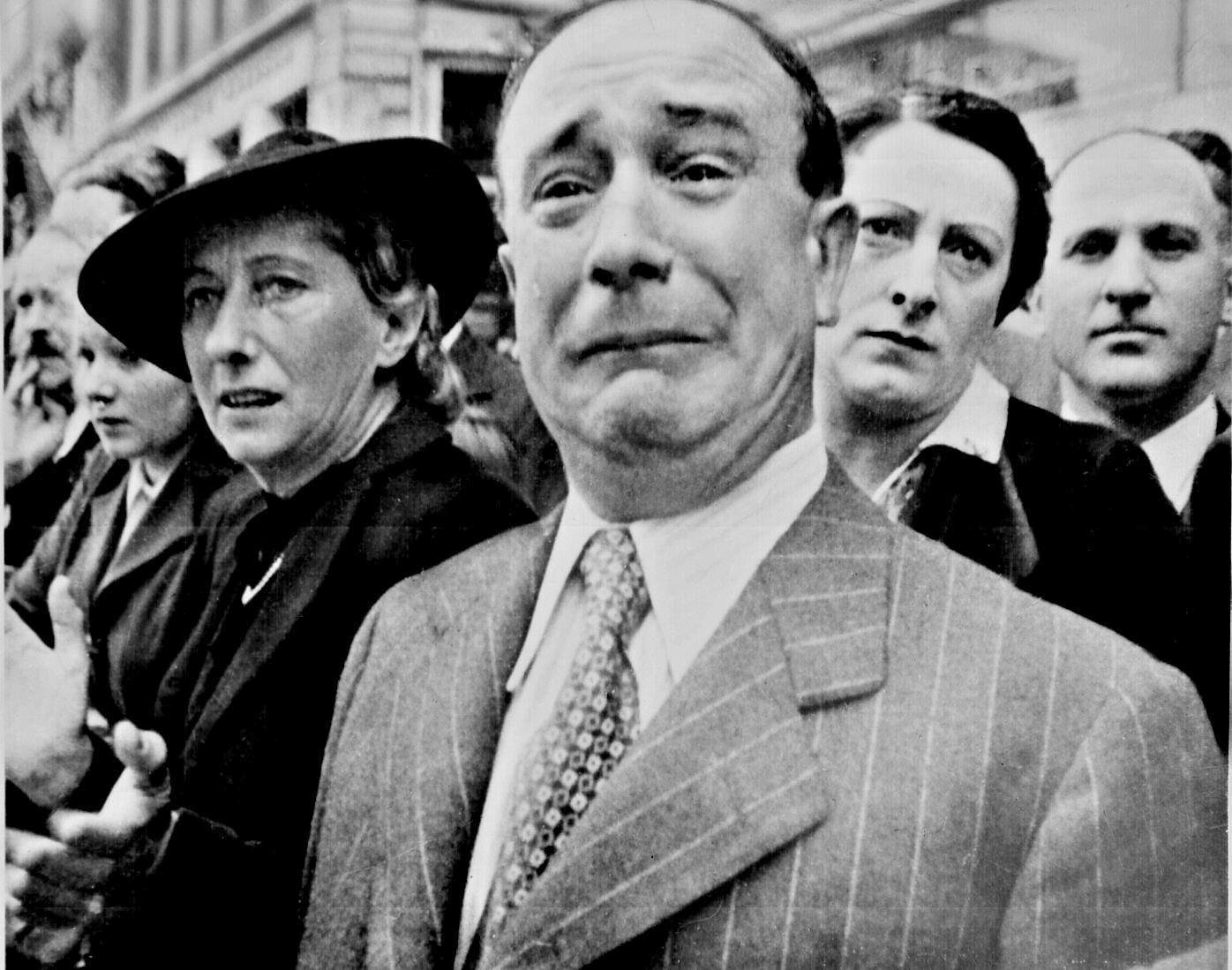
"A Frenchman weeps as German soldiers
march into the French capital,
Paris, on June
14, 1940, after the
Allied armies had been driven back across France."
Hitler strolls through the
Paris his troops have conquered for him – July
1940
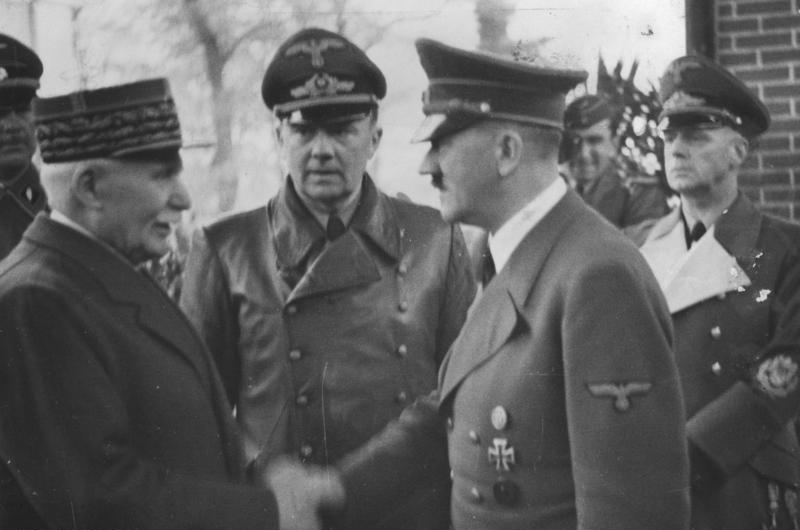
Pétain, Head of the
Vichy Government, shaking hands with Hitler – October 24, 1940
Deutsches
Bundesarchiv

|
|
By this time Britain had finally come fully under the tough leadership of Churchill, who on June 4th (after having ordered the rescue of the troops at Dunkirk and Cherbourg) reported to Parliament and the British nation itself that Britain, would fight on – no matter what the situation, in France, on the seas, on the beaches, in its fields or in its streets. Churchill was letting Hitler know that Britain would never quit. And again on the 18th of June he dug even deeper – reminding the British that they had an even larger responsibility facing them than mere national self-defense. They not only had an Empire plus their allies in Europe to defend but literally Christian civilization itself. Failure in this duty was unthinkable because it would bring on the world (the United States included) a very evil Dark Age. Therefore Britain would not fail in its duty but would take up the challenge in such a way that even a thousand years into the future the world would still remember that this was Britain’s "finest hour." With this, Hitler realized that his hope of gaining an understanding (basically capitulation) from Britain was not going to happen. And thus he ordered his Luftwaffe to begin attacking British military installations in preparation for an invasion of England. But the British Royal Air Force (RAF) fought back – and then had the audacity to fly bombers all the way to Germany to do some bombing of their own. This so infuriated Hitler that he switched his bombing from military sites to civilian cities – actually a waste of military power. The RAF did not break, and in September, after a huge Luftwaffe attack ended in failure, Hitler had to call off his plans (Operation Sea Lion) to invade England. German bombings of England would continue, but at a reduced rate that actually had no result except to further steel the will of the British people.
|
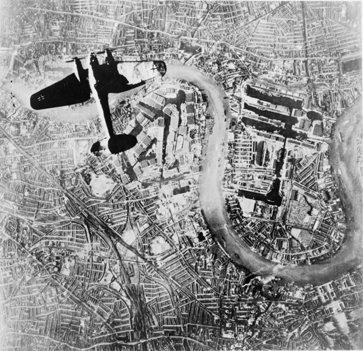
A Heinkel He 111 over the
East End of London during the Battle of Britain, 7 September
1940.
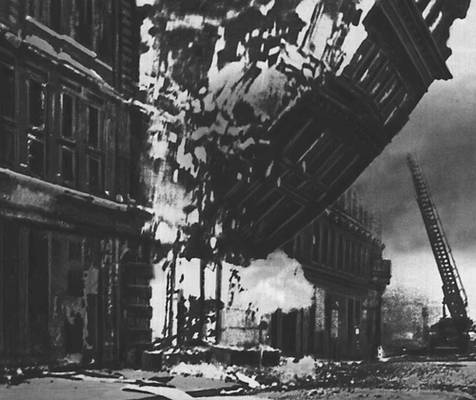
Battle of Britain:
a fiery London wall collapsing
A result of German bombardment
of London during the "Battle of Britain" – summer of 1940
The London Underground as an air raid shelter – summer 1940
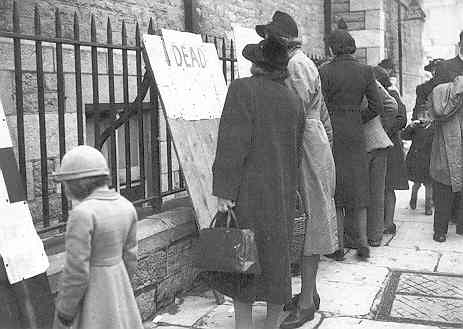
Residents of Plymouth, England,
reading the casualty lists
"Standing up gloriously out of
the flames and smoke of surrounding buildings,
St. Paul's Cathedral is pictured during
the great fire raid of Sunday December 29th." 1940.
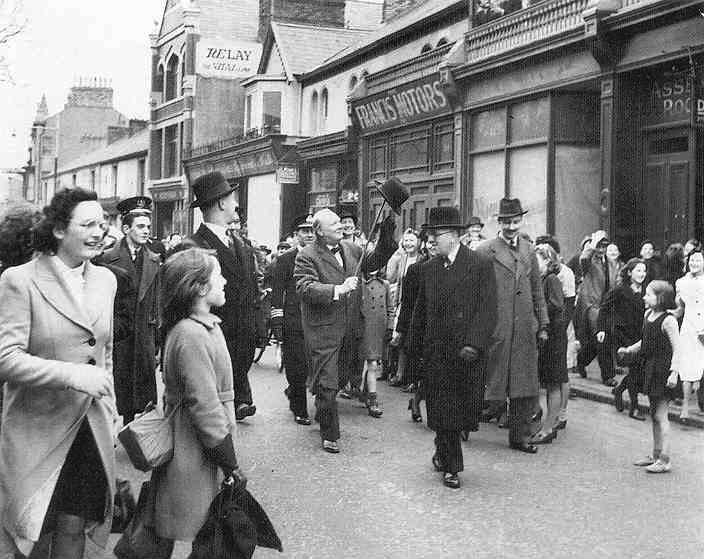
Winston Churchill whose mere
presence among the people encouraged them
to hang on against
Germany
Churchill surveys the damage
done to British Parliament by German bombers – May 1941
The Tripartite or "Axis" Pact (September 1940)
When Germany signed the Molotov-Ribbentrop Treaty in 1939 this seemed to overturn the provisions of Germany's earlier Anti-Comintern (anti-Communist or actually anti-Soviet) Pact2 with Italy. Hitler resolved this issue with a new Tripartite Pact signed in Berlin on September 27, 1940, by Germany, Italy and Japan. This not only gave considerable encouragement to Japan's imperial ambitions in Asia (at the expense of the English, French and Dutch and to the great irritation of America), it put Germany on record as willing to come to war as a Japanese ally if war should occur between Japan and America. With the signing of the Tripartite Pact, the Rome-Berlin "Axis" of power now officially included also Tokyo – and the world now acknowledged those belonging to this military alliance as the "Axis Powers." 2The
Comintern was simply an abbreviated name for the Communist
International, basically an alliance of the various Communist Parties
found throughout the European nations – all more or less under the
direction of Stalin. The goal of the Comintern was supposedly the
overthrow of capitalism and the establishment of a single working-class
society. But mostly the Comintern served Soviet Russian goals – as
Stalin personally selected those goals.
|
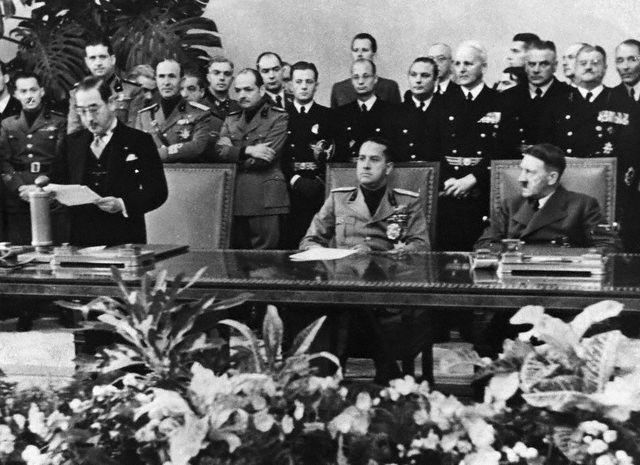
Axis Powers signing with Saburo
Kurusu
(Japan's Ambassador to Germany),
Galeazzo Ciano
(Italy's Foreign Minister)
and Fuhrer Adolf Hitler –
September 27, 1940 in Berlin,
Germany.
The term "Axis Powers" formally
took the name after the Tripartite Treaty was signed
by Germany, Italy and
Japan.
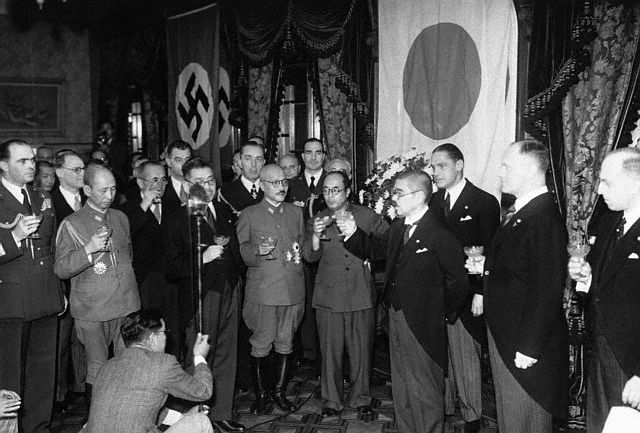
Imperial Japan and Nazi Germany
toasting the Axis Pact in Tokyo, Japan.
Here officials of both powers are
present
including Prime Minister Hideki Tojo
and
Foreign Minister Yosuke Matsuoka.

|
|
After France's surrender in June of 1940 Americans finally began to take events developing in Europe much more seriously, and finally began to gear up for the possibility of war. The defense budget jumped from $2 billion to $10 billion in that year, and America's first peacetime draft was instituted. But still, America remained officially neutral. Britain meanwhile was struggling to keep vital supply lines open from overseas. But by early 1940 German U-boats were taking a huge toll on Atlantic shipping, sinking ships faster than Britain could replace them. Step by step America began to increase its sales to Britain of vitally needed supplies – including in June millions of rounds of "surplus" ammunition sold to Britain, and in September including 50 mothballed destroyers given to Britain in exchange for land on which to build American air bases within the British Empire. By December of 1940, with Roosevelt’s announcement that America was to become the "Arsenal for Democracy," those supplies being sold to Britain openly included all varieties of war materials. However, there was still a strong spirit of isolationism in sections of America society, although in general the American population was beginning to swing to the idea that it was the country's responsibility to help Britain save Christian civilization from the Nazi scourge. The idea of Lend-Lease was put before Congress, and hotly debated. A majority of Democrats favored the idea of helping Britain in any way possible, and a majority of Republicans were opposed. Finally by March of 1941 the bill authorizing Lend-Lease was approved by both Houses of Congress thanks to the Democrat vote. The new law permitted the president to sell, transfer title, exchange, lend, or lease anything to any government whose defense the president deemed vital to the defense of the United States. Such partner governments included immediately Britain, but soon also China and then that autumn Russia as well. With the sinking of an American destroyer
by a German submarine at the end of October (1941), the last of the
Neutrality Acts passed and reconfirmed nearly every year in the second
half of the 1930s were finally repealed and American merchant ships
were allowed to be armed – and permitted to transport war material (to
Britain). At this point America’s claim to be neutral in the war was
clearly a fiction, a fiction which Hitler chose (mostly) still to
observe.
|
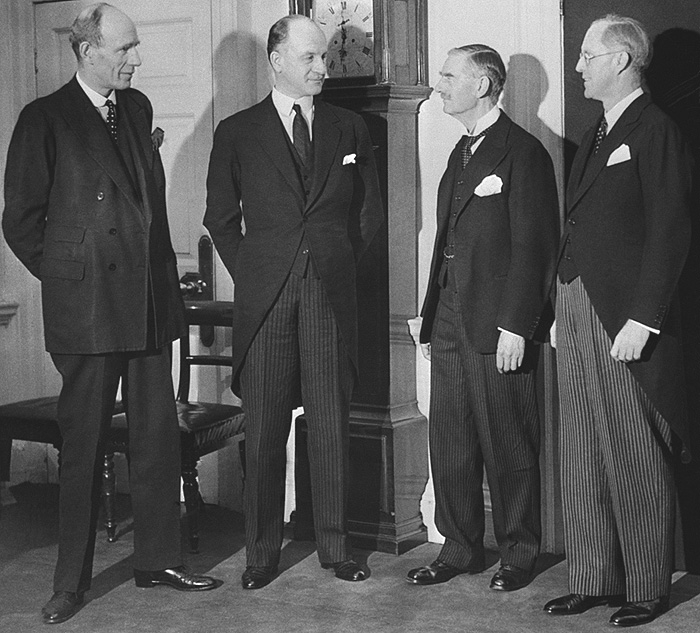
Lord Halifax, Roosevelt’s
personal foreign policy advisor Sumner Welles,
Neville Chamberlain and
US Ambassador Joseph Kennedy – London, 1940
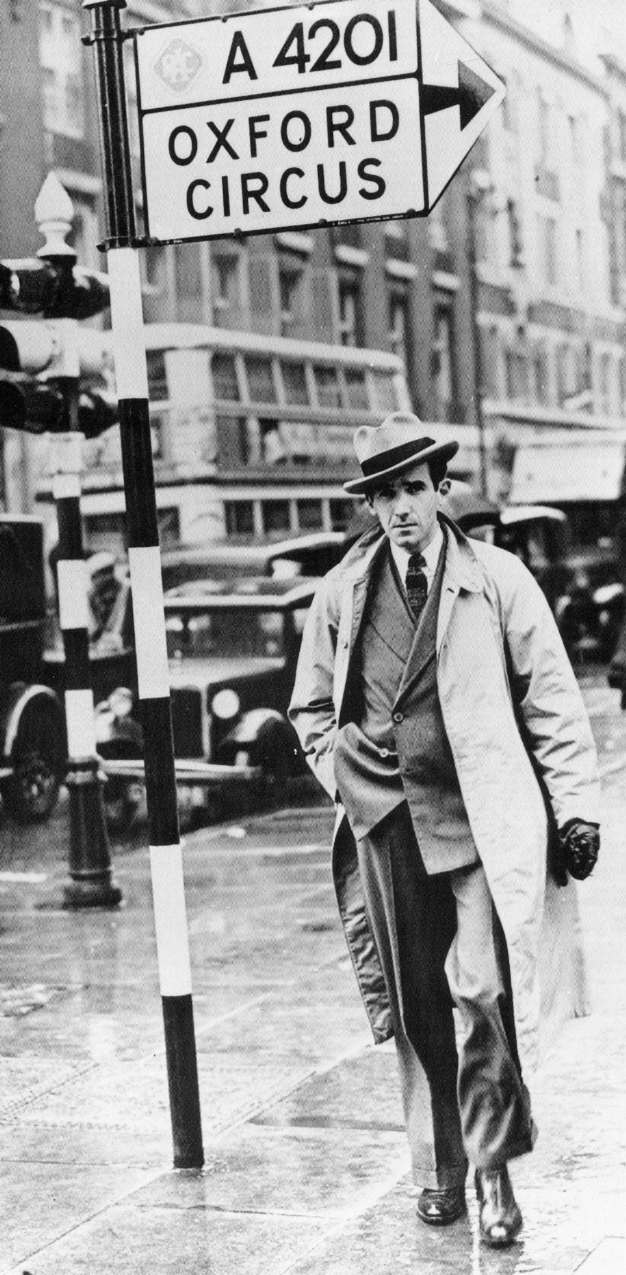
Columbia Broadcasting reporter
in London, Edward R. Murrow
who kept Americans
abreast of the stiff resistance of the British to the German attacks
during the "Battle of Britain" –
as America officially stayed neutral

|
Issues deciding the election
are national rather than international –
the Depression being the biggest
matter of interest to Americans
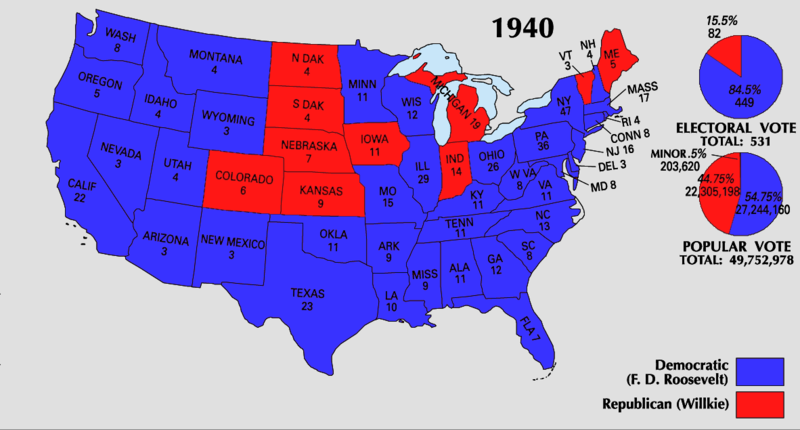
He is returned to office with a very large showing of national support
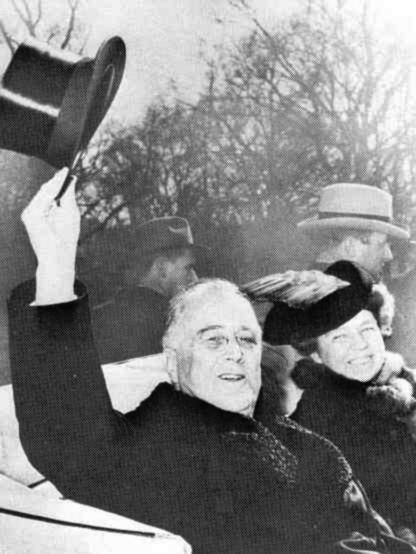
Franklin D. and Eleanor Roosevelt
on his way to his 3rd inauguration in January of 1941
Roosevelt's "Brain Trust" as America faces the possibility of war
Roosevelt's personal advisor
Harry L. Hopkins as he leaves for England – January 1941
Cordell Hull – Secretary
of State (1933-1944)
Henry L. Stimson, Secretary
of War (1940-1945; but also 1911-1913)
and Secretary of State
(1929-1933)

|
|
Then again without warning (although Churchill had tried to warn a disbelieving Stalin), Hitler launched Blitzkrieg against his former ally, Soviet Russia. Hitler’s Empire needed Lebensraum: the huge wheat-fields of Ukraine and Southern Russia to feed his people and the oil fields of Azerbaijan along the Caspian Sea to feed his war machine. And though he needed also to crush the Russian heart at Moscow, his focus was primarily on these southern objectives. But he had delayed the start of Barbarossa because of the need he personally felt to punish an irritating Serbian society. And this delay meant that he fell well short of this goal of seizing Stalingrad, sited at a key crossing of the Volga River (the last truly defensive position available to the Russians) before a typically horrible Russian winter set in. This failure shut down the possibility of any further progress until the following spring. In the meantime, Stalin, in seeing how desperate the situation was for his country, was wise enough to drop talk about saving the "Socialist homeland" … and instead changed dramatically the language by which he called on the people for the country’s defense. It was now "Mother Russia" that they needed to defend. And this was something that the people well understood and were ready to serve in its defense sacrificially – in fact very sacrificially.
|
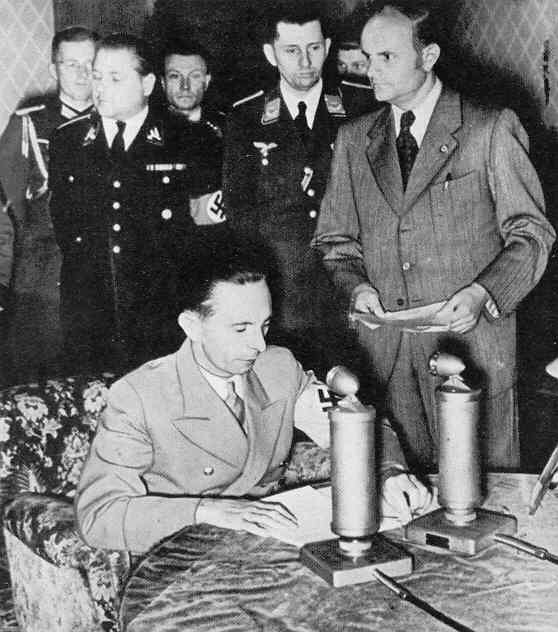
Joseph Goebbels announces
Germany's invasion of Russia – June 22, 1941
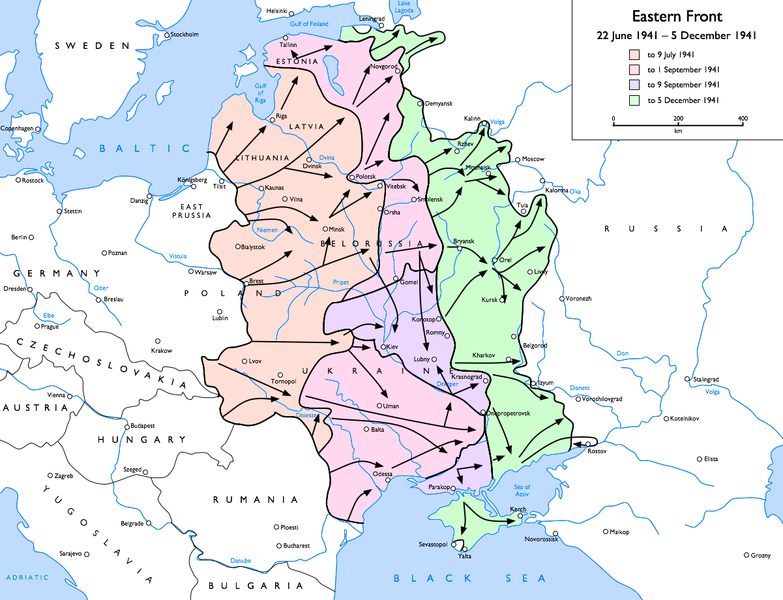
Operation Barbarossa: the
German invasion of the
Soviet Union
(by way of
Russian-occupied Poland) 21 June 1941 to 5 December
1941
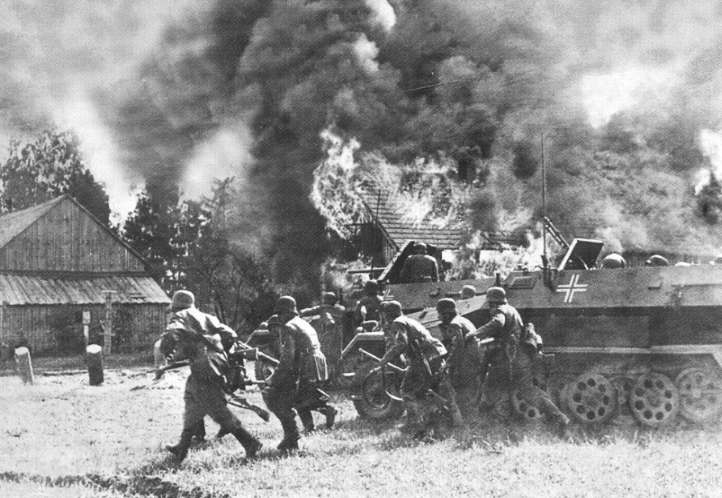
"Operation Barbarossa" –
the German surprise invasion of Russia’s Polish holdings: June 22,
1941
German troops
attacking the Russians
– 1941
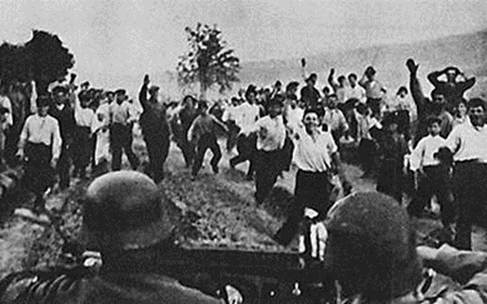
At first, many
Ukrainians –
having suffered so much at the hands of Stalin -
viewed the Germans as liberators. But
Hitler
ordered his troops to cease
their fraternizing with the locals. The mood soon turned
sour.
Polish Jews are also rounded up by the Germans
... to
be marched
off to concentration camps ... or just simply executed on the
spot
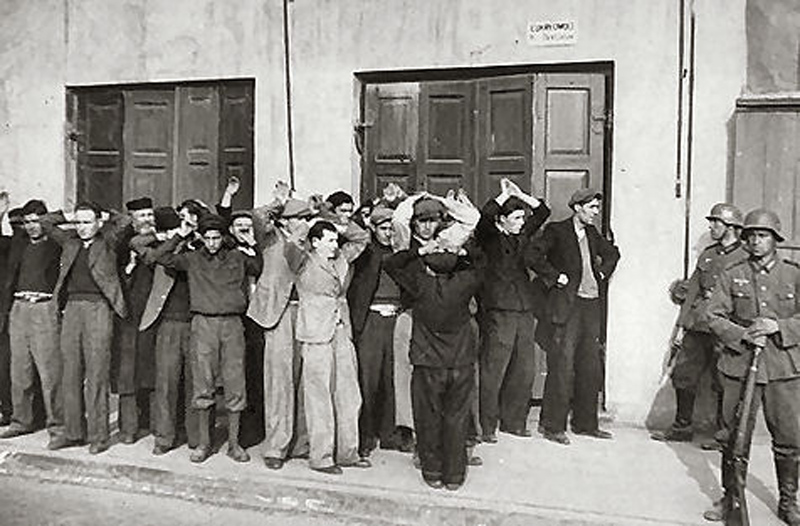
Jewish men arrested (prior to execution) in Czestochowa
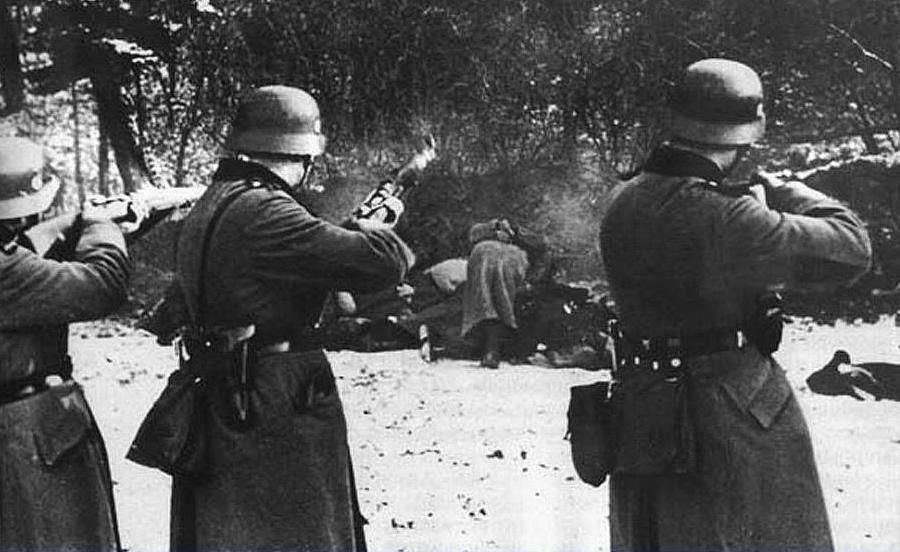
German soldiers executing
Jewish "undesirables"
A Lithuanian convict released
by the Germans beating Jews to death with a lead pipe
A Jewish rape victim in the
city of Lvov – one of 1000 Jews rounded
up and turned over to the Germans by local (Polish "Christian")
citizens
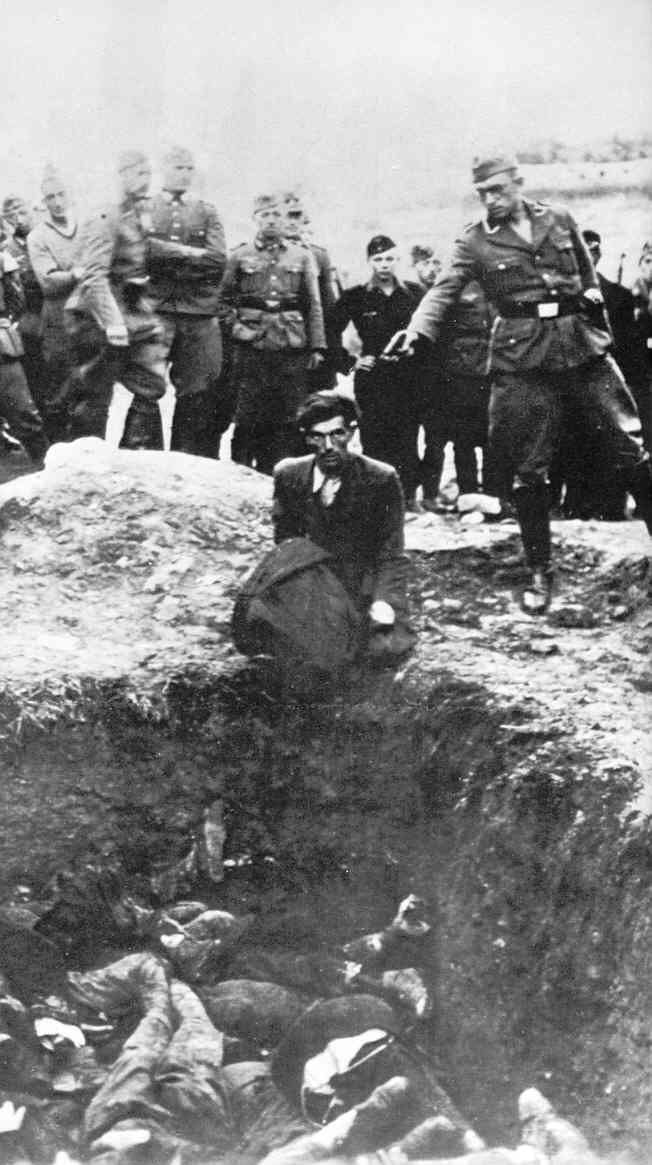
A Polish Jews about
to be executed by an SS officer
and dumped into a pit with
other dead Jews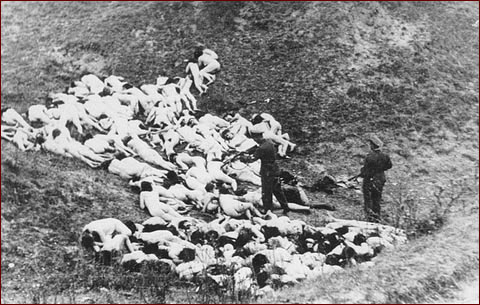
A
German police
officer
shoots Jewish women still alive
after a mass execution of Jews from the Mizocz
ghetto, Poland, October 14, 1942
The Russians too will be treated with total contempt .. and unbelievable cruelty
Russian POWs on the way
to German prison camps
Some 2.8 million Soviet prisoners
died of exposure, hunger,
disease, or brutality in just eight months of
1941–1942
The search for dead relatives
outside of Kerch, on the Crimean peninsula (Ukraine) – February
1942
But
the Russians demonstrate an equally unbelievable
determination to hold off the Germans at
all costs
Russian civilians digging anti-tank ditches outside Moscow
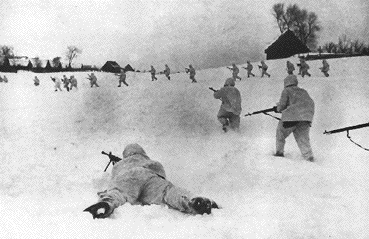
Soviet troops at the Battle of Moscow – December 1941


Miles H. Hodges